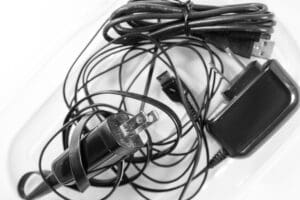When you move, you have a lot of things to think about — setting up in a new location, stopping and starting utilities, forwarding the mail and, of course, packing.When you’re considering which moving services to pay for, a packing service can be a huge load off your mind, especially when you’re moving high-ticket items like electronics. Not only will it save you time; you can be sure of secure, safe packaging for your items.
Whether you need to pack and move an elaborate stereo system, computers or a large-screen television, professional movers and packers will use the materials that are best for the job. Custom crating can protect even the most unusual or delicate specialty item.
You can pack your own electronics with the right strategies and materials. Here are some tips to keep in mind:
Use the right materials. Pick the right packaging — thick-walled, sturdy cardboard boxes that fit each item and adequate padding. If you have the original box the device came in, even better. Bubble wrap is a good, anti-static material to cushion your devices. Foam peanuts are another option. You may also have towels and sheets you’re moving — put them to work as padding. Make sure your packing tape is strong, too. Have labels and permanent markers available to keep everything organized.
Corral your cables. Consider taking a photo of your cables and how they’re connected to your television, stereo and computer. This reference will come in handy later. Labels are even better; tag each cable with its purpose and parent device — e.g. “TV HDMI” or “PC Hard Drive 1.” If colored labels will suffice, use those to help you coordinate the cable and its port. The same rule applies to remote controls and any peripheral device. Have three external hard drives for your computer? Make sure they’re all labeled.
With devices like hard drives, cables easily come out. The last thing you want is a box full of unlabeled electronic spaghetti when you go to set up your device in your new home. Further secure each cable by coiling it and wrapping it with a twist tie, zip tie or handy Velcro cable tie made for the purpose. These can help keep your cables organized when you set up your device again, too.
Play it safe. Don’t try to stuff a lot of electronics into one box. For one thing, they can be heavy, increasing the chance of an issue for your movers and putting more strain on the box. If multiple devices are in a box together, they can bump, which means they can break. That said, it’s a good idea to package the cables and remote controls that go with your device in the same box, or at least package them together in their own box.
Shut down devices before you unplug them and follow any other manufacturers’ safety instructions. Remove items like discs and video games from your devices and pack them separately. If your components include a product that might leak, such as ink cartridges, seal them in a plastic bag before you pack them.
Back it up. With computer files, backups are essential. Do a backup before you pack your computer. If you have a backup of your data on an external hard drive, for instance, consider transporting the backup yourself. You may have hired an excellent mover, and your electronic devices are covered if something happens, but in case of disaster, it’s good to know your data is secure.
Be aware of the heat. If you’re moving in the heat of summer, remember that the interior of a moving truck can get pretty hot, hot enough to potentially damage certain items, like CDs or videotapes. If heat is a concern, consider transporting those items in your own air-conditioned vehicle.
Tape and label boxes. After securing the boxes with strong tape on the bottom and the top, sealing all edges to keep out harmful dust, label them with the words “FRAGILE” and “THIS SIDE UP” (with an up arrow) on at least two sides of the box. You might also write down the contents or at least the room where they are headed — or number the box and add it to your detailed inventory list.
With the right preparation, moving your electronics to your new home can be a plug-and-play experience.
